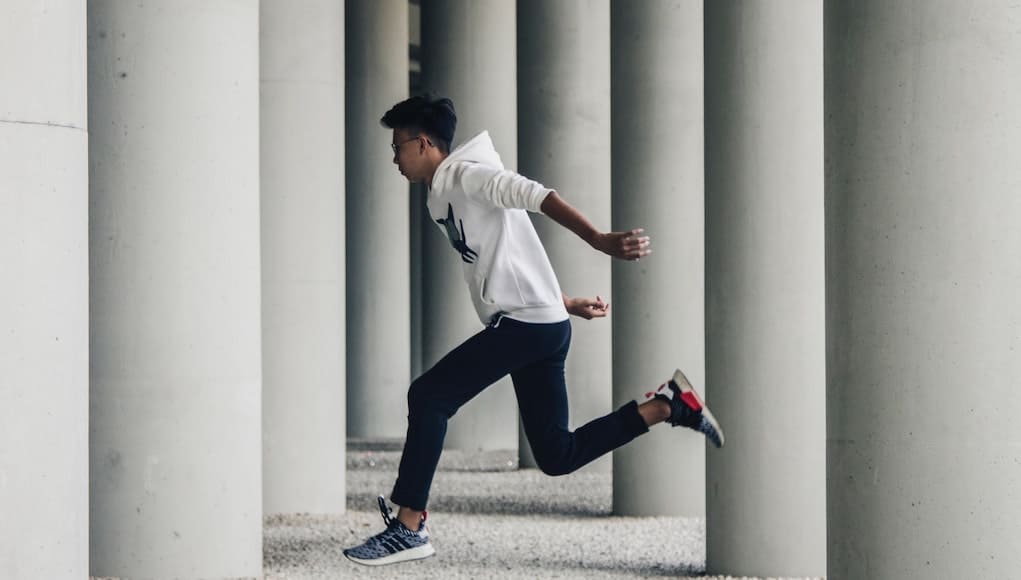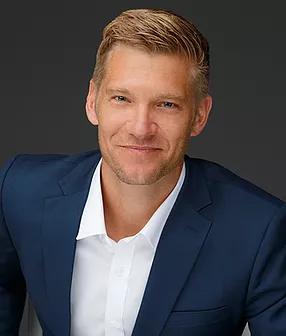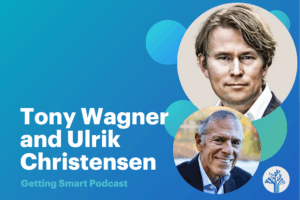Redesigning School: Six Key Pillars From Six of the Most Innovative Schools and Programs

In the midst of an unprecedented pandemic, everyone is scrambling to ‘re-imagine education.’
Home learning pods have surfaced to create smaller, tight-knit communities of learners. Hybrid programs have emerged to blur the lines between home and school. And new remote programs with innovative tech tools are being introduced worldwide to enable learning to take place anytime, anywhere.
And while these new programs are noble in their attempt to chart a new course for education, there are some of us who did this ‘re-imagining’ several years ago. They are the Montessorians, Deweyians, Reggios, and Sir Ken Robinsons’ amongst us. Pioneers far ahead of their time. Their timeless models never required a school building, bell schedule, or end of year report to thrive; but rather, a core set of principles built completely around their learners. As a result, their learners are self-sufficient, independent, curious, empathetic, and social-emotionally and globally aware.
This article explores those six key pillars, and six school programs that best embody them. My hope is that they provide inspiration for how you might make your school or program timeless and learner-centric.
Questions for Reflection: How do you tap into your students’ interests? How might you structure learning around discovery and exploration?
Pillar #1: A Co-Working Studio Model: Integrated Learning Studios at LearnLife, Barcelona
In a world of constant uncertainty, co-working spaces have completely transformed the way in which we work. They have fostered new connections, spawned greater innovation, and created happier employees.
Could they also transform the way in which we learn?
This is the question LearnLife Studios in Barcelona is answering through their innovative studio model. Rather than siloed learning in classrooms according to subjects, learning revolves around a series of integrated studios. For example, the ‘furniture design’ studio merges engineering, design and math as students design modular and mobile furniture for the school; the ‘Chef Studio’ blends food science, entrepreneurship and finance as students design and run small food businesses to serve their community. There are no formal teachers to run each studio, but rather adult ‘learning guides’ that help scaffold and support student learning, while ‘experts in residence’ provide the technical training along the way. Students share the space with real entrepreneurs perfecting their own business concepts.
In fact, learning is so fluid that Stephen Harris, the co-founder of the Studios remarks, “Students don’t know if they are sitting next to a learning guide or entrepreneur.”
There are also no formal grades. Instead, students must ‘defend their learning’ in each studio through a 360 evaluation that includes a portfolio of work and self, peer and mentor feedback. The studios not only elevate learning, they also eradicate behavior issues. One particular student who was expelled from three schools prior to arrival at LearnLife remarked, “I learned more in three months, than I had in three years at other schools.”
Questions For Reflection: How might you make learning more fluid for students? What adults could you bring in? Which subjects might you combine around deeper learning experiences?
Pillar #2: Learning Centered on Inquiry: Inquiry-Based Learning at Innovations Academy, San Diego
All meaningful learning begins with a provocative question. Finding that question is at the core of what Innovations Academy, a small charter school in suburban San Diego is all about. The inquiry process begins by tapping into the child’s natural curiosity, and then designing experiences and opportunities to propel its exploration. For example, after discovering students’ interest in popular music, one 5th grade teacher led a deep exploration into what made a hit song, with students writing, producing and performing their own original ‘hits’ for the community. The fifth grade class next door took on an entirely different inquiry around ‘what made historical civilizations great;’ choosing to write, design and put on a large scale play production to re-enact historical events. As school head Christine Kuglen explains, “Students are natural learners, we just help create the right conditions.”
A culture of autonomy and trust is the backbone for these experiences. Students are free to make decisions about what, how and when they learn; and teachers are free to make decisions around what and how they teach. This culture of autonomy has helped the school adapt seamlessly to new challenges. Despite having to move locations three times in the past four years, and now moving all learning online because of COVID-19, they have maintained steady enrollment. As Christine, the founding director insists, “Teachers can make decisions rapidly as they are free to trial and error.” Here is a post from a parent that helps capture what makes IA such a great place.
Pillar #3: Community as the Classroom: Real World Projects at Real School in Budapest
Imagine a place where 9-11 year olds act as the leading scientists on climate change; or as outdoor adventurists in planning excursions for the local community.
These are the kinds of Real experiences children undergo at Real School in Budapest. The school was founded on the concept that the main goal of learning should be to help preserve and sustain our planet’s most pressing resources. As a result, students are leading the charge on issues like climate change; working with neuroscientists to conduct field studies on local bee populations and publishing their findings in peer reviews; planning sustainable, eco-friendly excursions for their community; working with event planners to coordinate activities, transport, meal preparation, and risk assessment.
Dave Strudwick, the newly appointed head of school, explains that these experiences help transform ‘realistic schooling into real learning. “We tell students, rather than an autobiographical text for your teacher, your stories will be shared widely in a published book and performed around a campfire for the community.” This, Dave insists, naturally engages students as they know the audience for their work stretches beyond the classroom.
Questions For Reflection: How might you make learning more community connected? How might you help students take on roles in the real world? Where and who might students share their work with outside of school?
Pillar #4: Age is only a number: Mixed age groups at The Abbas Orchard, Philippines
Imagine every morning, before the sun peaks over the horizon, thirty primary and secondary students aged 11-17 working together to feed animals, till community gardens, monitor soil ph, and water plants.
This is how every morning begins for students at The Abbas Orchard Montessori School in Baungon, Philippines. In this unique school model, learning revolves entirely around the farm. Younger classmen learn farm maintenance, soil science, animal care, and plant cycles from their older peers. Each student has a specific role to play.
Mixed age, student-run businesses also grow out of the farm. Some businesses supply eggs to the local markets, while others design handicrafts out of leftover scraps to sell in local retail stores.
The teachers’ role in the program is to guide children and scaffold learning based on personal learning needs, and the needs of the farm. For example, in the adjacent schoolhouse, a teacher might draw the water cycle on the whiteboard, helping students explore systems more sustainable for their crops; while next door, another group of students might analyze the profit/ loss spreadsheets of local businesses’, using key insights to structure their own businesses’ finance model.
In this Montessori school, learning IS life.
Questions For Reflection: What learning experiences might you design that blend learners across ages? How might you integrate mandated curriculum?
Pillar #5: Flexible and Collapsed Timetable: Project Week at KIS International School, Bangkok
During the final week of the last school year, KIS International School ran a grand experiment it had never attempted in the past. It eliminated the timetable.
The school replaced the timetable with five project options related to COVID-19. Students were free to self-organize, plan out their week, divide/allocate work, establish hoped outcomes, and present to the community. Administration held their breath.
The results, as Alison Ya-Wen Yang recalls later “blew me away.” Some students designed t-shirts and infographics to help enforce good hygiene and social distancing; others designed future hospitals that could intake more patients using Minecraft; some created advertising campaigns and documentaries to support local NGOs; and others fused together new cuisine and created instructional videos for how to make it.
Although the learning was optional, over 80% of students participated. Even more remarkable: Students who normally required learning support transformed into high-fliers.
Questions for Reflection: How might you free up more space in your timetable? What classes might you combine to allow for deeper learning experiences?
Pillar #6: Deep Learning Dives: Combining subjects to make learning more fluid at Lead Prep and UP Academy, Seattle and San Francisco Bay
Imagine collapsing the timetable for two full days every week to engage students in cross-disciplinary projects to address real problems. At LeadPrep, a small micro-school in Seattle, this happens twice a week.
During interdisciplinary Mondays and Wednesdays, students learn to write and publish stories, edit film, conduct interviews and report on current events through a mixed- age student run NewsRoom. Feature stories range from timely topics such as, “How to Make New Habits During Quarantine,” to lighter topics such as, “Is World of Warcraft Classic Really Worth It.” Casey Ikeda, the lead History teacher explains the idea behind the integrated course, “After experiencing a year with Co-Vid 19, the murder of George Floyd, and the ongoing BLM movement, we wanted to go further with building [these opportunities] into our system of curriculum and not feel as if these events were somehow separate from “school.”
UP Academy, another micro-school located in San Mateo, California is also using real issues like these as a context for learning. In a mixed-age level integrated project around the topic, “How can I be a changemaker in my world?” Students have created suffrage murals, written letters to elected representatives in City Hall, and even organized protests to defend minority rights. Tanya Sheckley, the school’s founder says students feel empowered because they are allowed to take risks. “At UP Academy, there is a difference between a good student and a good learner. A good student learns to pass tests, a good learner knows how to persevere even when they fail.’
Planning integrated experiences like those at UP Academy and LeadPrep involves a coordinated effort from the whole staff. Maureen O’Shaughnessy, LeadPrep founder explains, ‘If we really value student agency, we also need to also provide it for our teachers.’ As a result, in both programs, time is carved out each week for teaching teams to plan integrated learning experiences, and reflect on student work.
Questions for Reflection: How might you combine and coordinate your content with another teacher? How can you use CoVid 19, elections and other real world topics as a context for learning?
How to Dive Deeper
We all have unique learners, people, and communities to serve. We don’t have to build a new model for school to best serve them. We simply need to make a few tweaks to the ones we already have.
Pick one key pillar and work together to explore how it might look in your classroom or school. And if you need help getting started, here is a book that will help you map out the journey.
For more, see:
- Time to Redesign is NOW
- Forward-Thinking Schools Begin With Forward-Thinking Design
- The Learning Design Opportunity of Our Time
Stay in-the-know with innovations in learning by signing up for the weekly Smart Update.







0 Comments
Leave a Comment
Your email address will not be published. All fields are required.